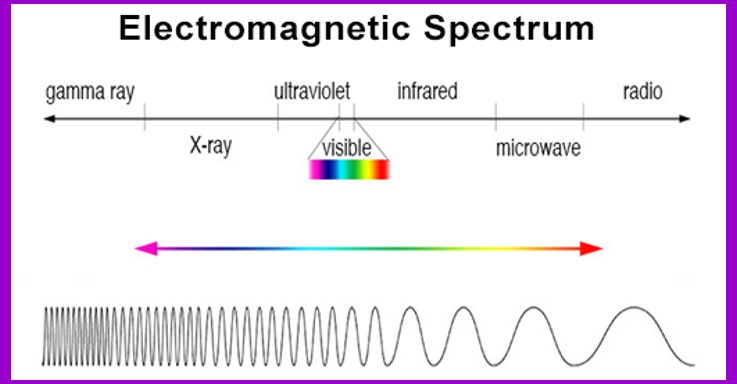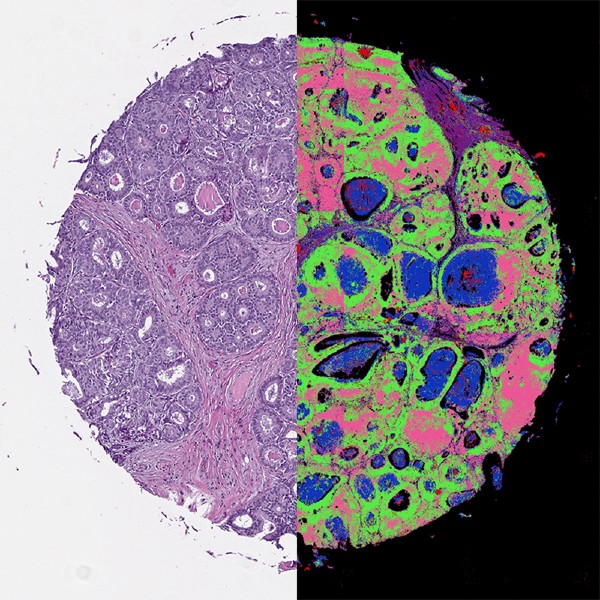- What is optical imaging?
- What are the advantages of optical imaging?
- What types of optical imaging are there and what are they used for?
- What are NIBIB-funded researchers developing in the area of optical imaging to improve biomedical research and medical care?
What is optical imaging?
Optical imaging uses light and special properties of photons to obtain detailed images of organs, tissues, cells and even molecules. The techniques offer minimally or non-invasive methods for looking inside the body.
What are the advantages of optical imaging?
- Optical imaging significantly reduces patient exposure to harmful radiation by using non-ionizing radiation, which includes visible, ultraviolet, and infrared light. Because it is much safer than techniques that require ionizing radiation, like x-rays, optical imaging can be used for repeated procedures to monitor the progression of disease or the results of treatment. 
- Optical imaging is particularly useful for measuring multiple properties of soft tissue. Because of the wide variety of ways different soft tissues absorb and scatter light, optical imaging can measure metabolic changes that are early markers of abnormal functioning of organs and tissues.
- Optical imaging can be combined with other imaging techniques, such as MRI or x-rays, to provide enhanced information for doctors monitoring complex diseases or researchers working on intricate experiments.
What types of optical imaging are there and what are they used for?
Endoscopy uses an endoscope, which is a flexible tube with a light source to illuminate an organ or tissue. An endoscope can be inserted through a patient’s mouth and into the digestive cavity to find the cause of symptoms such as pain, difficulty swallowing, or gastrointestinal bleeding.
Optical Coherence Tomography (OCT) is a technique for obtaining sub-surface images such as diseased tissue just below the skin. Ophthalmologists use OCT to obtain detailed images from within the retina. Cardiologists also use it to help diagnose coronary artery disease.
Photoacoustic Imaging delivers laser pulses to a patient’s tissues; the pulses generate heat, expanding the tissues and enabling their structure to be imaged. The technique can help monitor blood vessel growth in tumors, detect skin melanomas, and track blood oxygenation in tissues.
Diffuse Optical Tomography (DOT) and Imaging (DOI) are non-invasive techniques that use light in the near-infrared region to measure tissue properties such as total hemoglobin concentration and blood oxygen saturation. Because DOT and DOI work well in soft tissue, the techniques are widely used for breast cancer imaging, brain functional imaging, stroke detection, photodynamic therapy, and radiation therapy monitoring.
Raman Spectroscopy relies on Raman scattering of visible, near-infrared, or near-ultraviolet light. The laser light interacts with molecular vibrations in the material, with shifts in energy revealing the material’s chemical properties. Applications include identifying chemical compounds and the structure of materials and crystals. During surgery, Raman gas analyzers are used to monitor the mixture of gases used for anesthesia.
Super-resolution Microscopy encompasses a number of techniques to obtain very high-resolution images of individual cells. One example is photoactivated localization microscopy (PALM), which uses individual fluorescently marked molecules to create a super-resolution image comprised of a compilation of individual molecules in a cell or tissue.
What are NIBIB-funded researchers developing in the area of optical imaging to improve biomedical research and medical care?

Novel optical imaging for more accurate glaucoma screening. Glaucoma is a leading cause of blindness. Early diagnosis and treatment can slow or stop progression to blindness, but the current test for elevated intraocular pressure is inadequate for detecting glaucoma at an early stage. Changes in the collagen fibers of the sclera (white of the eye) play a significant role in the disease process, potentially offering a reliable marker of early stage glaucoma. NIBIB-funded biomedical engineers are developing a novel optical imaging technique that can detect changes in the structure of the collagen fibers of the eye sclera. The technique employs a computational model that correlates specific changes in sclera proteins with early onset glaucoma. The new test will enable early initiation of vision-sparing treatment and continuous non-invasive monitoring of the response to treatment.
Assessing and treating neurological damage associated with cardiac arrest. Eighty to ninety percent of cardiac arrest (CA) survivors suffer significant neurological damage. Addressing these devastating effects has not been possible due to the need for imaging of rapid changes to blood flow and metabolism in the brain during CA and during emergency CPR. Engineers are developing an optical imaging system for critical real-time imaging that measures cerebral blood flow and metabolic functions such as oxygen consumption. Optical imaging will be paired with electroencephalography (EEG) to study neurological changes related to interrupted blood flow. The system will enable advanced study of brain injury during CA and CPR and offer real-time treatment options that can improve survival and outcome for CA patients.
Non-invasive imaging to monitor breast cancer chemotherapy. Bioengineers are developing non-invasive optical imaging techniques that can monitor tumor chemotherapy and rapidly identify the 20% of breast tumors that do not respond. Signals emitted from painless near-infrared light-based probes provide measurements of fat content, blood vessel formation, and oxygen levels, which indicate whether or not the chemotherapy has begun to shrink the tumor early in the course of treatment. Such information will allow physicians to stop chemotherapy and/or change treatment if the patient is not responding, enabling overall improved management of breast cancer treatment.
Updated December 2020
